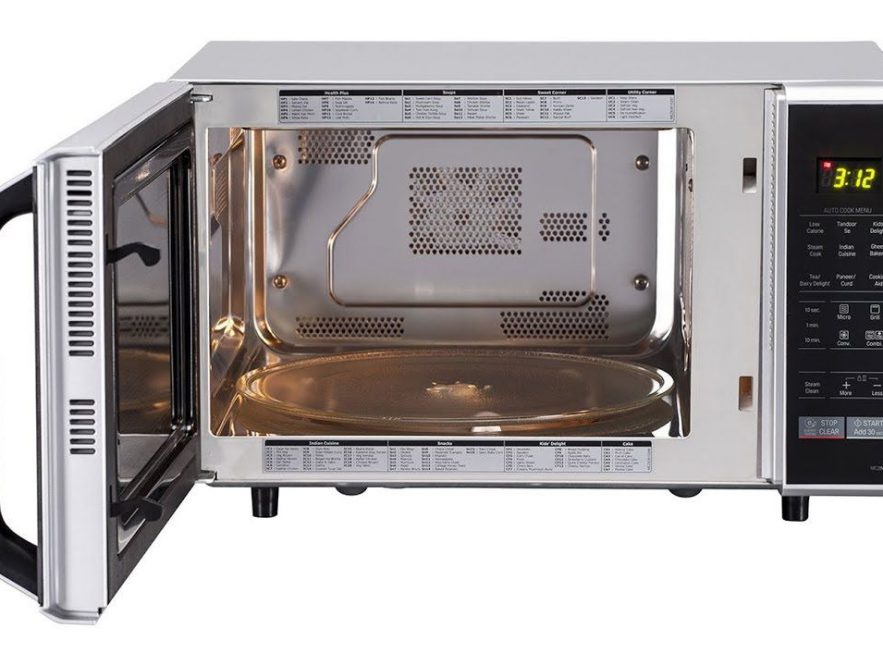Have you observed a slight noise when it is switched on and put to work? Do you think it is making more noise than it did when you first brought it in? Not sure of the reason though? Well, the following are the top reasons why your microwave is loud or noisy:
Drive Motor
If you hear an unusual clattering sound coming from your microwave, the reason behind that commotion will surely be your drive motor. The microwave uses a motor-driven coupler to turn the glass tray in your microwave. The motor should definitely be replaced if it is causing such cluttering noises.
How to test a microwave drive motor with a multimeter:
- Ameliorate your microwave from the beginning.
- In order to ingress the drive motor, what you need to do is, remove the appliance’s cabinet. The motor is usually located at the bottom of the microwave which is held in place by a retaining screw and wires.
- Take off the motor to test its working continuously or not. Set it at the highest setting and scrutinize to the terminals. A justly operating motor will produce a reading of zero.
- If your microwave makes a grinding noise, or if the motor does not have continuity, then you might need an alternate motor drive.
Magnetron
Just in case if the microwave is making a loud whirring noise, it clearly means that the magnetron is not working properly. The magnetron is part of the high voltage circuit that produces heat in the microwave.
How to test microwave magnetron with a multimeter:
- Launch into by unplugging the microwave; you will be handling electrical components.
- Withdraw your microwave’s cabinet and detect the magnetron. Before inspecting the magnetron, emit the high voltage capacitor. Substantiate the mounting bolts are tight and that the high voltage diode is working. And there is no error found, remove the magnetron in order to test it.
- Continuously Test the magnetron. first of all, set your multimeter to Rx1, and then connect one probe to a terminal and the other to the metal housing of the magnetron, if test specifies that there isn’t continuity. Then, touch both probes to the terminals, this should produce a reading of two to three ohms.
- If your test results differ then you surely need replacement magnetron.
Drive Coupler
If you hear buzz sound or cacophony coming from the microwave it means that there is a problem with the drive coupler, which helps power the glass turning tray.
How to inspect a microwave drive coupler:
- Unplug your microwave before beginning this inspection.
- Open the microwave door and remove the tray and roller guide to inspect the coupler. On some models, you may need to remove the motor from the floor of the microwave before inspecting the coupler.
- Remove the drive coupler to inspect it closely. You are looking for any signs of wear, discoloration, or cracks.
- If you find any of the symptoms above during your inspection, you will need a replacement drive coupler.
Roller Guide
If you hear crashing or clamor sound is coming from the turning tray in your microwave, the issue could be with the roller guide, which helps the turning tray to rotate without friction.
How to inspect a microwave roller guide:
- This is the simplest inspection; no tools are required.
- Open your microwave door and take out the glass tray.
- Inspect the roller guide optically and if you see any of damage, discoloration, cracking, or wear. Verify that all the wheels rotate freely without resistance.
- If you find any of the issues listed above, you will need a replacement roller coaster guide.
Cooling Fan
An unusual noise when your microwave is on may be coming from the cooling fan. The cooling fan cools the magnetron while the microwave is in use.
How to inspect a microwave cooling fan:
- Make sure that you guarantee your safety, by unplugging your microwave.
- The cooling fan will be located inside the cabinet; you have to remove the cabinet and the fan assembly cover in order to acquire it.
- Once it’s in the right place, check the fan assembly for any signs of wear or damage to the blades. Also, look for and remove any rubble that the blades might be coming in contact with and causing the noise.
- If you find that your fan is worn, discolored, or damaged, you will need a replacement cooling fan.

